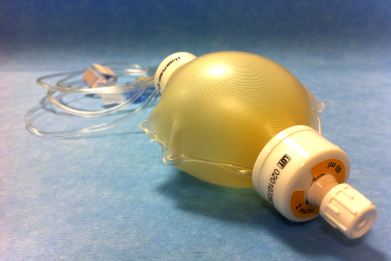Hallux Valgus Surgeon Nice
Recovery from surgery:
a rapid phase
THE MODALITIES OF A RETURN HOME
Hallux Valgus Surgeon Nice
Supervised by health professionals, specialists in percutaneous surgery in the Nice area
Hallux Valgus Surgeon Nice
Successful return home is essential
This is an essential condition for recovery and success, and it is important to support it. A close follow-up is then deployed through the interventions of a dedicated team of nurses or private nurses. They will act as intermediaries between the surgeon and the patient on a daily basis:
Available at any time of the day or night
Presence several times a day at home.
Daily feedback to the surgeon on the patient's progress
Rigorous note-taking of the postoperative follow-up and written and oral communication of the surgeon's instructions and information.
Provision of an analgesic diffuser for good management of possible postoperative pain

Hallux Valgus Surgeon Nice
Pain management after surgery:
When the patient leaves the hospital or clinic, he or she is given a specific device that allows for the gradual diffusion of painkillers through the intravenous route. This allows the analgesic effect of the anesthesia to be completed over time. The analgesics used are not derived from morphine, to avoid intolerance. This device is a progress in the sense that thanks to its miniaturization, the patient is not obliged to remain lying down, contrary to the traditional infusions. This device facilitates the patient's convalescence and reassures him. The liberal nurses who will follow the patient on his return are perfectly trained in its use.
This allows the patient to:
-Staying at home at night, and avoiding the noise and anxiety of the hospital environment
-Being surrounded by loved ones right after the operation, which reassures him and facilitates his recovery.

Management of postoperative edema
Pain management cannot be fully effective if instructions for limiting foot swelling are not followed. Swelling will distend the tissue and cause pain.
To prevent this, the following habits should be put in place as soon as the operation is completed:
1) Elevate the operated limb as soon as the patient sits or lies down. In fact, venous return is favored, which will help limit the edema.
2) Follow the protocol for resuming locomotion within three weeks after the operation. Failure to follow this protocol may lead to a resurgence of edema and therefore pain. As a reminder, here are the main points of this protocol:
Foot support should be limited to the strict minimum during the first week, and the patient should remain at home. Standing without walking or stomping should be avoided.
During the second week, the patient can go out of the house, limiting the walking time to periods of about fifteen minutes, not more than two hours per day. The postoperative shoe can then be removed permanently in favor of soft shoes, such as "Basket".
During the third week, the patient gradually increases his walking time according to his feeling.
3) Self-education which will consist of
-Quickly return to a flat footed stance after the operation
-Put on soft shoes after one week
-Resume walking after one week away from home
4) Icing, which consists of applying a cold pack when the patient's foot is elevated in a sitting or lying position. This will limit swelling and inflammation and therefore the onset of pain.

Zoom on the analgesic diffuser
It is a single-use material consisting of a mini-tank and a tube allowing the diffusion of the product.
Through a strong network of trained nurses, the reservoir is filled once a day and the patient's pain level is reviewed.
This diffuser is an important progress in the management of pain and allows the patient to go home, reassured, and as soon as possible.
When the device is removed, conventional oral painkillers are prescribed for about four days. After this period, painkillers must be taken according to the patient's feelings.
The three provisions aimed at limiting pain (local anaesthesia, portable diffuser and traditional oral treatment) follow a philosophy that aims to avoid the onset of pain and to maintain a good level of comfort for the patient.
The use of Fast Track, or rapid recovery after surgery.
Fast-track is a protocol created 20 years ago in Denmark. It aims to restore the patient's autonomy as quickly as possible after an operation, by taking multifactorial responsibility for his recovery. It covers measures taken during the operation and in postoperative management, as well as pain relief devices.
What is the purpose of fast-track?
The objective is to limit the psychological and physical stress related to an operation. This allows for a better recovery and increases the chances of success. It also allows to limit the risks linked to prolonged hospitalizations (nosocomial diseases, circulatory disorders etc.)
What is its use in the treatment of hallus valgus?
-The use of minimally invasive surgical techniques such as percutaneous and mini-invasive techniques. They are much less aggressive for tissues such as skin, tendons or muscles and therefore allow a good recovery.
-The use of a loco-regional anaesthesia which implies a limited sedation to the strict necessary. This avoids the need for general anesthesia, which can be a source of complications. Loco-regional anesthesia also allows a good level of postoperative analgesia to be maintained for several hours;
-The hospitalization in day hospital that these new techniques allow and the progress in anesthesia. The patient can quickly return to his normal routine, which reduces his stress and anxiety. This obviously contributes to a better recovery in the best conditions.
A close follow-up at the patient's home with a team of providers. They provide daily monitoring and a reinforced link with the care team and the surgeon. This makes it possible to secure the crucial weeks following the operation.
-Reinforced coordination between the perioperative staff and the hospital teams. This allows for a permanent follow-up of the patients. The messages given to the patient are perfectly coherent, which aims to reassure them.
-The patient does not just undergo the procedure. He is an actor and participates in his complete recovery. The patient is put in a situation to manage his own pain, thanks to a scale used with the help of the liberal nurses.
-Finally, it should be remembered that the level of information provided to the patient on the complete course of his or her care is essential to ensure that the care is perfectly mastered and that the complementary measures to be implemented after the operation are well followed.
Foot Surgeon
Contact
Saint-George Clinic
Building H 3rd floor
2 avenue de rimiez
06105 Nice
Phone
04 93 169 169
Quick links
Percutaneous Foot Surgery - Definition of Hallux valgus
Percutaneous Foot Surgery - Foot anesthesia
Percutaneous Foot Surgery - Foot surgery
Percutaneous Foot Surgery - Return home

